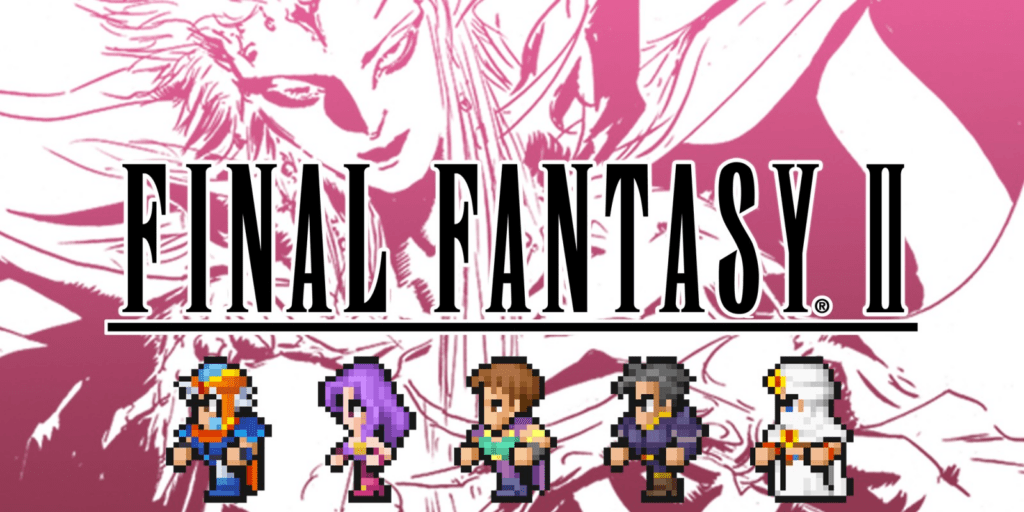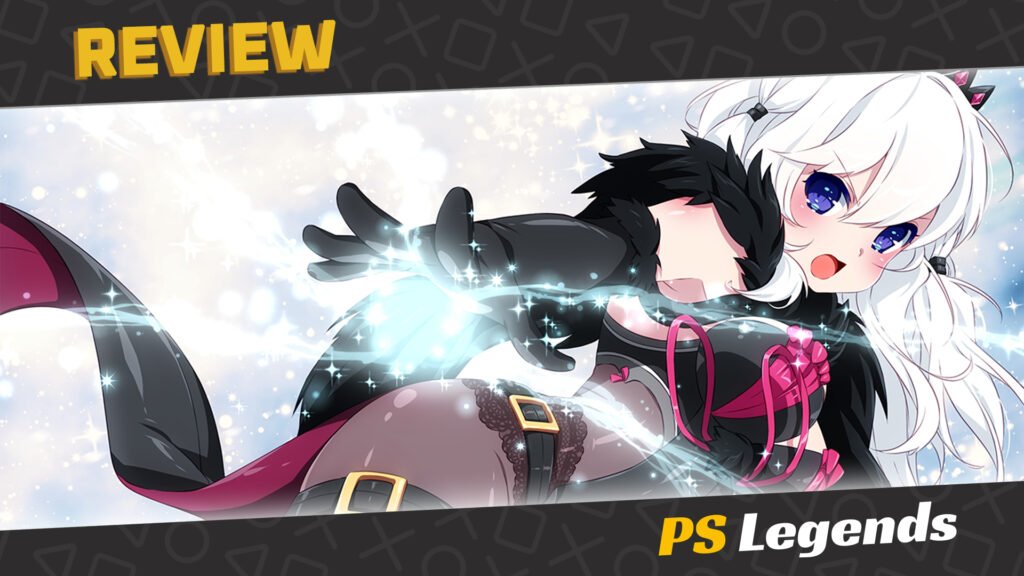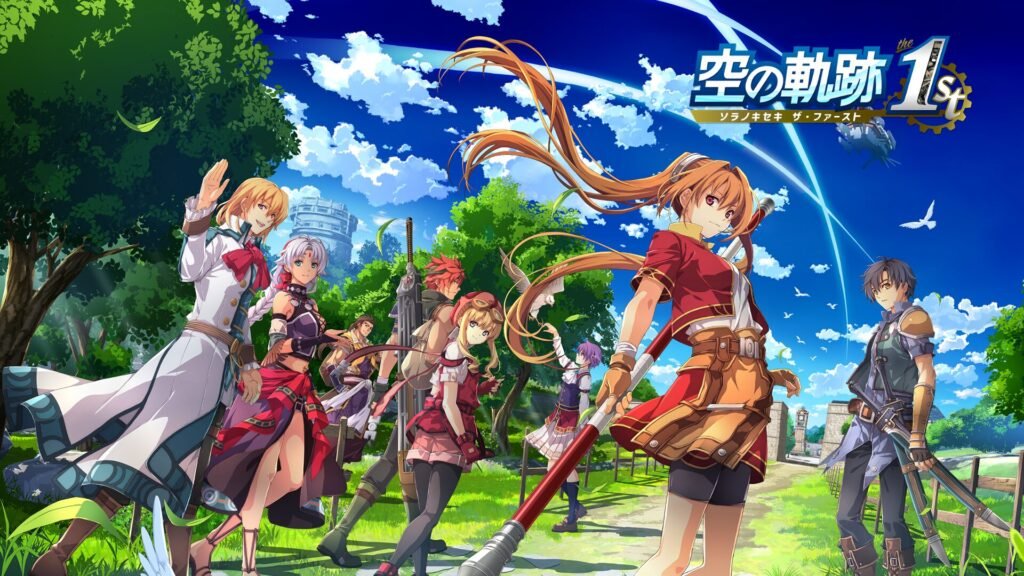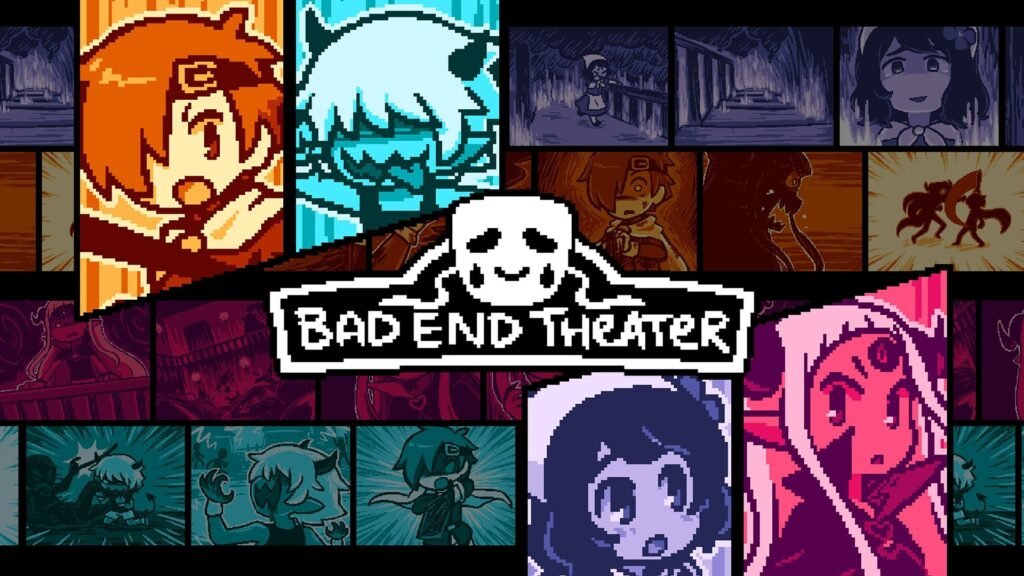Ah, Final Fantasy II. A game I hold in high regard as the first in the series to give a damn about its characters, with party members that have active roles in the story rather than being demoted to generic, nameless ‘Warriors of Light’ like the original Final Fantasy and Final Fantasy III before its thorough remake.
On This Page

Introduction
Final Fantasy II is a dark-fantasy role-playing game developed and published by Square in 1988 as the second installment of the Final Fantasy series. The game has received numerous enhanced mild-remakes and translated remasters over the years which were more valuable to international players since neither this game nor Final Fantasy III were initially released outside Japan. Following enhanced versions for iOS and Android respectively, the game was re-released again as part of the Final Fantasy Pixel Remaster series.
Final Fantasy II introduced many elements that would later become staples of the Final Fantasy franchise, while it also eliminated the traditional experience point leveling system of the previous and later games in the series, instead introducing an activity-based progression system where the characters’ statistics increase according to how they are used or acquired which received a mixed response from fans. Despite being advertised as a sequel to Final Fantasy, the game includes no characters and locations from the first game.

Story
The imperial bloodline is a cursed one, influenced and corrupted heavily by the promises of power from none other than Satan himself. Where the late Emperor was able to easily ignore Satan’s influence, his successor, the young Mateus, willingly welcomed the devil into his heart and accepted the power that came with it: the power to summon demons into the world.
The age of long-lived peace is at an end. This new Emperor of Palamecia has called forth monsters from the underworld and begun his campaign for world conquest. With the armies of other nations occupied keeping the demons and monsters at bay, few remain to combat the Palamecian army. However, occupation of other kingdoms is not enough for Mateus. Palamecia must also make a bold statement to ensure their dominance: Burn every village to the ground and slaughter any survivors.
Our tale begins with a group of four orphans who are on the run from the totalitarian empire which massacred and burned their hometown. Firion is our protagonist, with his iconic rainbow-streaked bandana-thing which makes him the ideal LGBTQ+ mascot character; Pretty unlikely for 1988, but stranger things have happened.
Maria is up next; Being Firion’s potential love interest, it’s surprising to see how often this is overlooked considering her appearance. Even with the pixelated imagery it’s hard to ignore the welcome return of Maria’s original, uncensored look featuring her long, flowing purple hair and one largely exposed… pixel. Yep, it’s true. Then we’ve got Guy, the party’s mentally stunted friend (surprisingly ballsy move from Square there) who can talk to beavers (I know, we’re all thinking it) and finally there’s Leon, Maria’s brother who goes missing during the escape.
Rescued and nursed back to health by Princess Hilda and her resistance group, The Wild Rose Rebellion, Firion, Maria and Guy plan to repay their debt by joining the rebel army and getting revenge for their murdered families while searching for Leon during their travels. The characters are interesting and diverse yet work well together and even guest party members contribute something to the story.
Sadly, it’s not a pace that’s maintained, with Firion and Maria’s relationship being largely forgotten apart from one awkward dance scene, and Leon’s activities and motivations during his absence are almost entirely ignored. Interestingly, there are a lot of references to Biblical stories sticking out in the plot too, with elements of Paradise Lost and The Tower of Babel referenced while the main villain is a not so subtle caricature of King Solomon. It’s a bold yet not unpleasant move by Square.

Gameplay
The player can freely roam an overworld containing several towns and dungeons. A menu-based system allows the player to outfit each character with equipment and up to two items for battle. Magic spells are assigned to each character from the item menu, and certain spells, such as ‘Cure’, can be used outside of battle. The player can also save their progress on the overworld.
Weapons, armour, items, and magic spells can be purchased at shops, and townspeople provide useful information for the player’s progression through the game. One new feature is the ‘Word Memory’ system: when in conversation with non-playable characters, the player can ‘ask’ about and ‘memorize’ special keywords or phrases, which can later be repeated to other NPCs to gain more information or unlock new actions. Similarly, there exist a handful of special items that can be shown to NPCs during conversation or used on certain objects, which have the same effect.
In battle, players can see their party’s current and total hit points along the bottom of the screen. On the overworld and within dungeons, random encounters with enemies will be fought, though the new cheats menu gives the player the option of switching off random encounters, though story-related battles (usually bosses) cannot be skipped. The battle and movement speed and experience received can also be modified now.
Final Fantasy II uses the same turn-based battle system seen in the original Final Fantasy, with battle parties consisting of up to four characters at a time. The game introduces a ‘back row’ in battle, within which party characters or enemies are immune to most physical attacks, but can be harmed with bows and magical attacks.
What I like about Final Fantasy II is the unusual leveling system, or perhaps the lack of a leveling system would be more accurate. Rather than gaining levels from battle experience as is usually the norm, your party will instead receive steady stat boosts to whichever stats are utilised in combat. Receiving damage will see the relevant party member gain boosts to HP and defense, while your damage dealers will grow their attack stat. Spellcasting raises the intelligence stat while also levelling up the particular spell used. It really feels like you’re directly controlling training.
Final Fantasy II also introduces the chocobo, the signature Final Fantasy mascot, which lets characters ride to a location at greater speed without being attacked by enemies. The recurring character ‘Cid’ is also introduced here, and a character of the same name has appeared in every main-series game ever since.

Graphics/Sound
I won’t bother retreading old ground when describing the visual makeover of Final Fantasy II Pixel Remaster. I think we’ve covered that already in my original Final Fantasy Pixel Remaster review. Let’s just say it’s received the bare minimum as far as remade textures are concerned. You won’t be finding any ‘mastery’ of the visuals as the name suggests.
What the game and its siblings have done well are some interface improvements such as new fonts, and modifiers to the reduce the gameplay grind, while the soundtrack has once again been completely remade with gorgeous orchestral tracks which only enhance the atmosphere further. The main theme which plays on the world map is still hauntingly beautiful no matter how many times it’s heard.

Replayability/Trophies
The game is only a touch over ten hours long, which is something of a relief if you have to restart, which is a possibility. You see, the difficulty of the final boss spikes considerably, and you can’t simply grind your stats to victory. If you miss picking up the infamous Blood Sword which is a very limited-time-only item, you’ll either need to power-level all of your spells for hours to stand a chance, or restart the game or earlier save file. It’s entirely possible to play yourself into an undesirable corner which can be a kick in the teeth.
You’ve got the beginnings of unpopular, early Final Fantasy tropes here in the form of missable content. Many items, enemies, locations and trophy requirements will disappear during the story, making 100% completion impossible for players who prefer to enjoy the story and return to areas later to tie up loose ends. Unlike its predecessor, a guide is essential for this platinum.

Conclusion
I’ll be honest, Final Fantasy II is by far my favourite of the 8-bit era Final Fantasy games. There’s a dark quality to the writing and plot direction, which feels very ahead of its time; it’s not really until the late 90s onwards that religious undertones and demonic themes are commonplace in gaming.
It’s a very brave move from Square to take classic biblical tales and fuse them together in one short fantasy adventure, with certain roles twisted in unexpected ways. Perhaps it’s easy to get away with such toned-down blasphemy when you’re (originally) developing for a cartridge with very little storage capacity, resulting in heavily edited scenes and text boxes which require days to create.
There are depths to each character, hidden depths, but depths nonetheless. There’s enough here to get you invested in the lore, so much so that I found myself actively seeking out a translation of the Final Fantasy II expanded novelization, which does feature some unexpected changes to the plot but also fleshes out its characters in impressive ways. Emperor Mateus, for example, is quite the enigmatic tyrant with a hell of a backstory.
Final Fantasy II brings a few ‘firsts’ for the series, including ideas which are still present in modern-day gaming and, as such, it deserves some level of respect, but sadly it doesn’t mean all that glitters is gold. Sticking around to the climax reveals more than a few holes in the armour. For example, the fourth party member slot is pretty much a revolving door and filled with whichever ally is in the vicinity at the time, meaning there’s very little point in training and thoroughly equipping said person since they’ll likely vanish once you’ve cleared the next dungeon, ready for their replacement. This happens all too often.
The levelling system is also put into question when facing the punishing final dungeon when you realise that maxing out your party’s attack, defence and HP stats are pointless when facing enemies which can deliver fixed-percentage HP damage which can’t be quickly healed. This becomes particularly daunting when facing the final boss which can deliver devastating blows while healing itself simultaneously and nullifying many of your attacks. A few extra hours of grinding proved no help here either.
As such, we’ve got an imbalanced game that’s very easy and enjoyable to pick up and play, yet difficult to really finish in its entirety without some prep-work, resulting in a journey that’s captivating and intriguing yet potentially unfulfilling if you accidentally miss something important, which can leave a bitter taste in your mouth.
Joys
- Interesting storytelling with bold, religious themes
- Fun levelling system based around personalised training
- Some great lore and world-building
Cons
- The ending can be a broken experience, either too easy or near impossible depending on your attitude to completion
- Visual upgrade is minimal at best
- Characters could be fleshed out more


